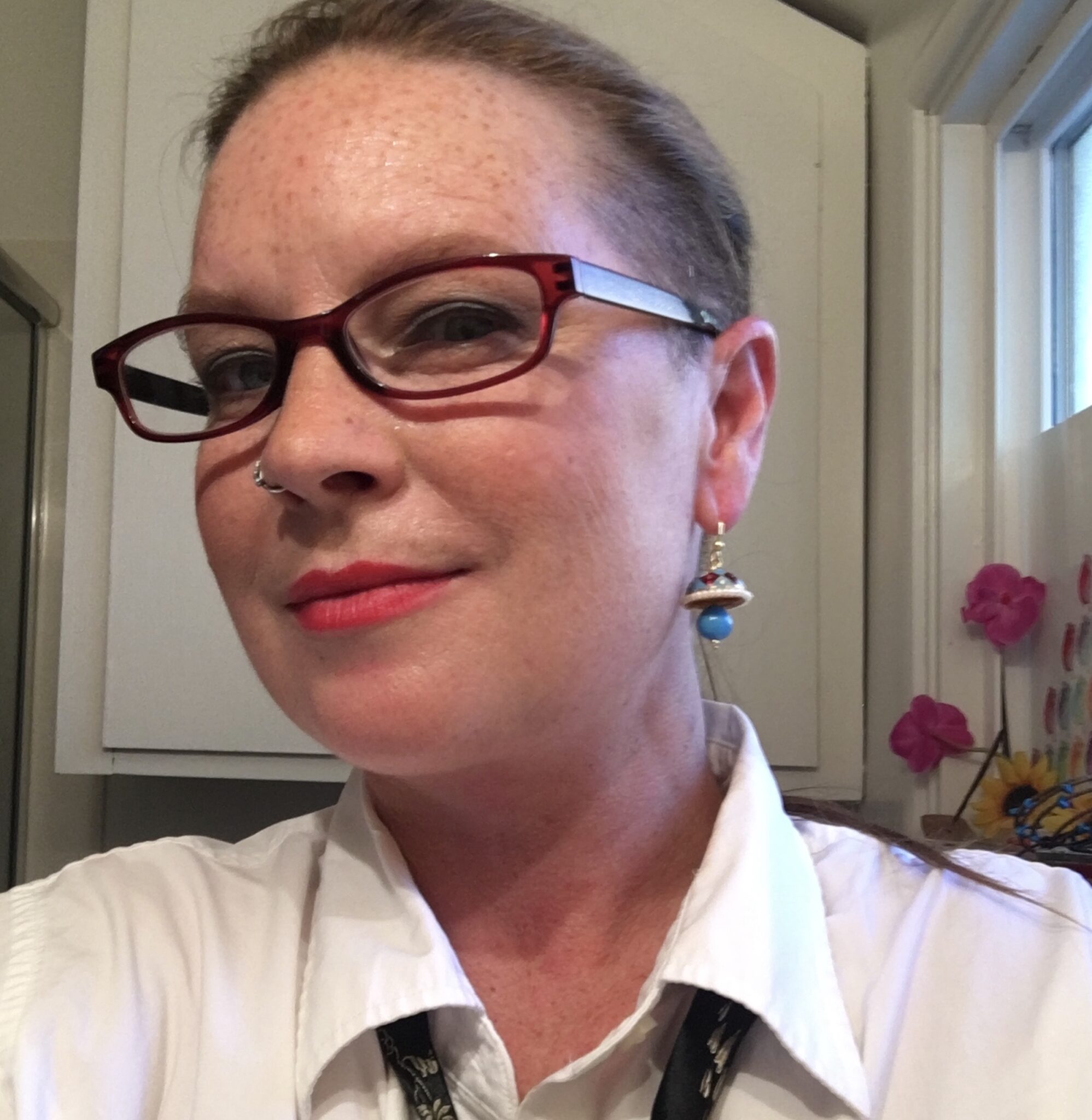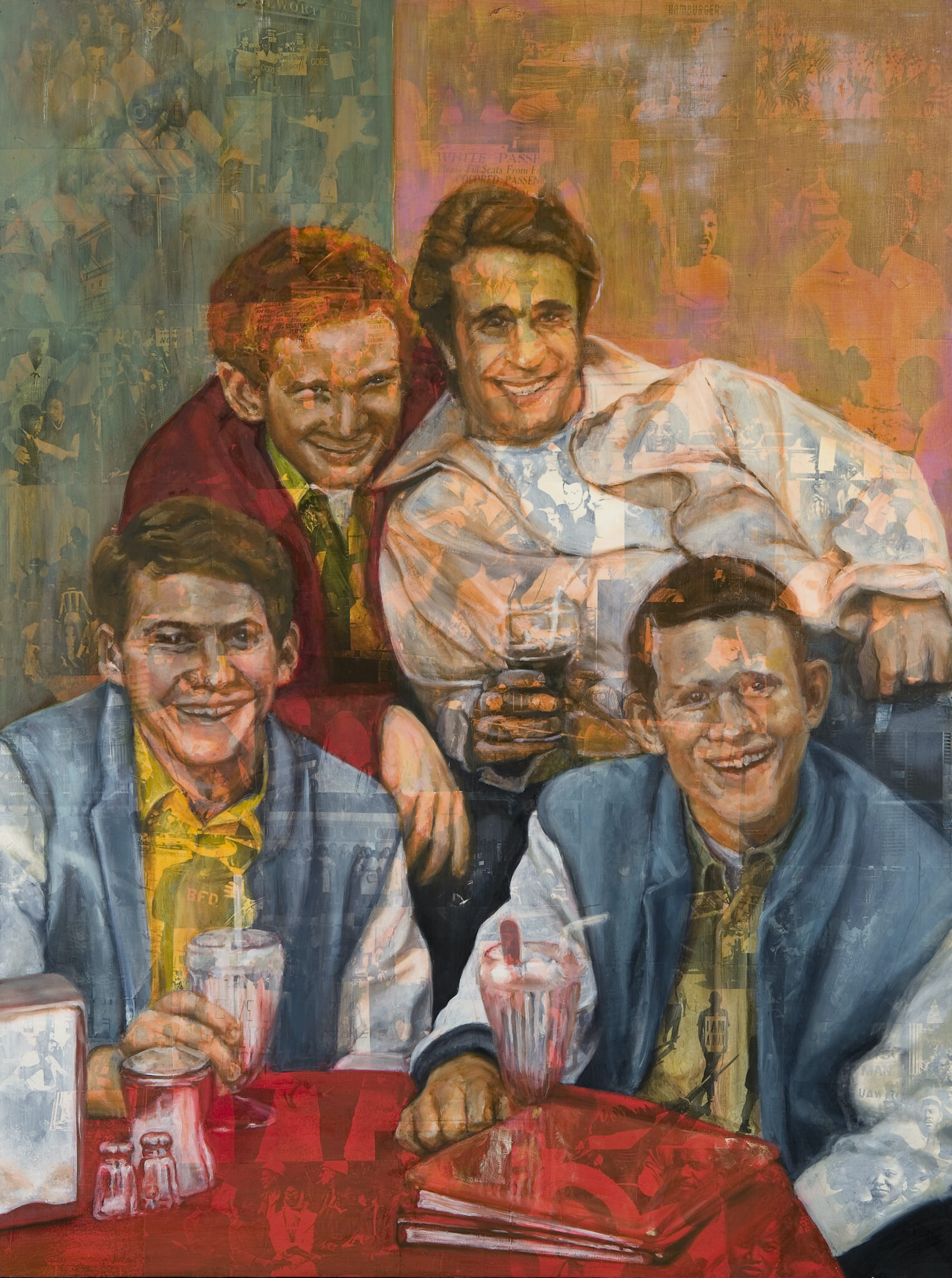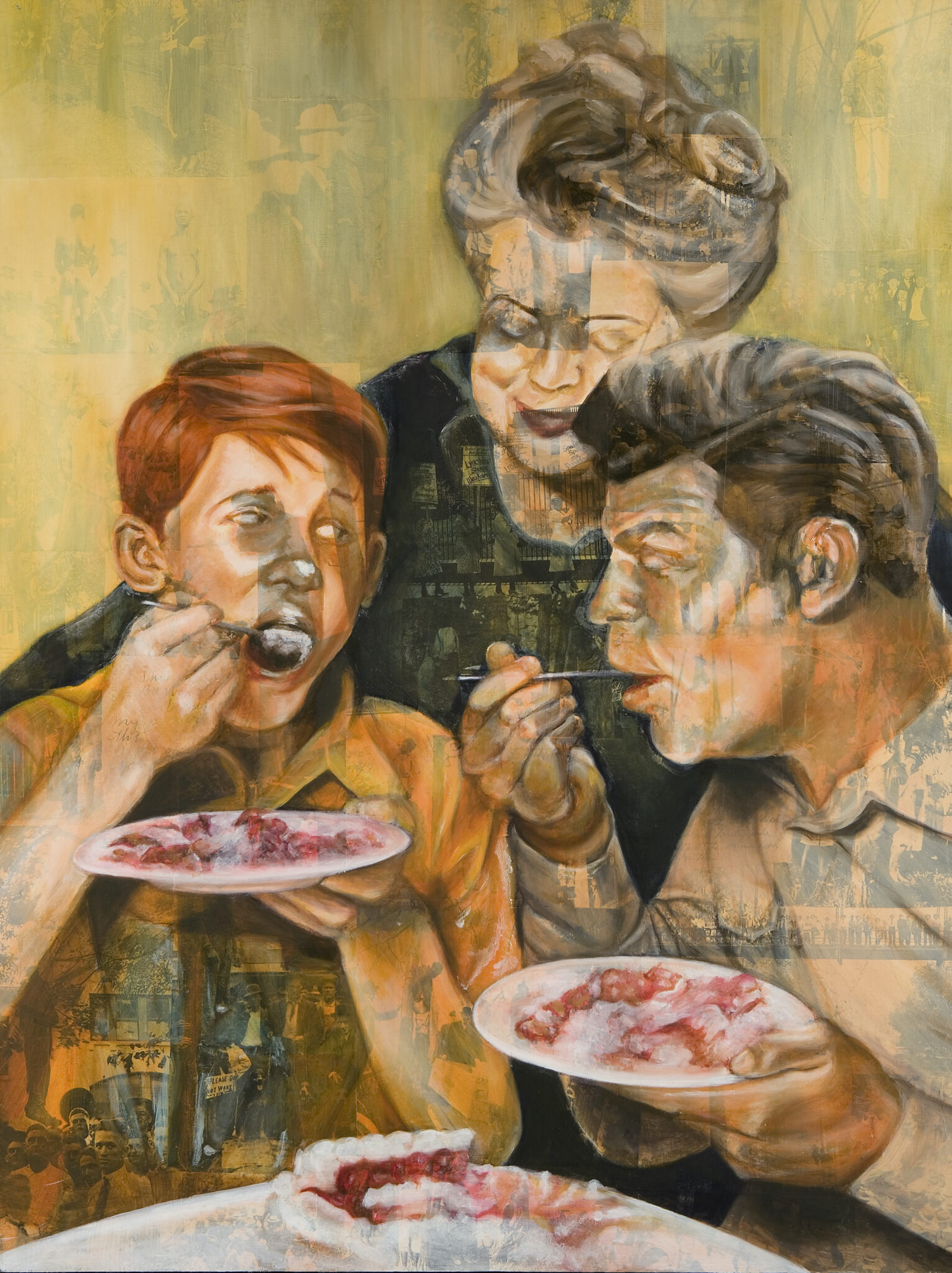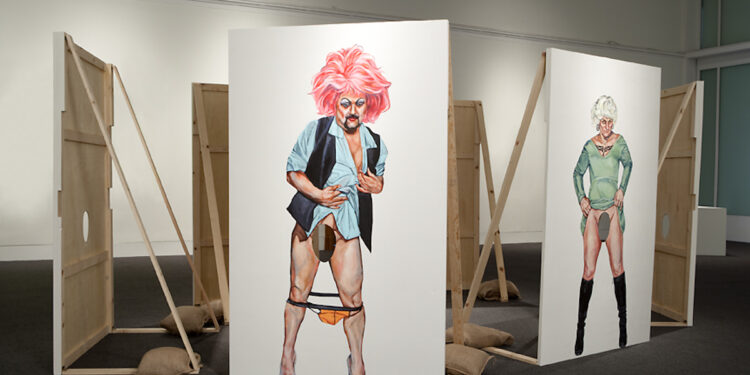“Like most artists, I am a bit of a magpie. I find everything is interesting and the ideas from my experiences come out in their own time. The paintings I do are centered in dissection. The taking apart of things and putting them back together. A process of interpreting and inserting things. An act of creation and recreation.”

Born in Williamsburg, VA, artist Yvette Deas was raised in Manhattan, New York City. Throughout her childhood, she traveled with a caravan of actors. Both of her parents were thespians performing in Shakespeare Festivals and seasonal regional theaters.
Having stored away funds from a Brownie TV commercial that went national when she was a child, Deas moved to Kyoto, Japan at the age of 17 to work as an artist model. Through meditation, she began dreaming of flying through the sky and decided to return to the states to become a pilot.
She landed in Mount Airy, NC. Being the birthplace of actor Andy Griffith, Mount Airy is believed to be the inspiration for Mayberry, the setting of several popular TV shows in the 60’s and 70’s. Deas shared a trailer at the end of the air strip and had several run-ins with Klansmen at the Fixed Base Operations (FBO), a private business that handles private aviation.


It was during this time that she really began to see the cracks in the American Dream, which would later come out in her artworks titled Happy Days and American Pie. Her experiences in North Carolina appear in multiple visions across the artwork that reveals the dichotomy between the lies we buy into and the reality beneath it.
Leaving the discomfort of that world and pulling her mother out of South Harlem, which was going through the destruction of the 90’s “crack wars,” Deas flew across country to Santa Monica to teach flight instruction. It was here that her interest in art began to take hold.
In aviation, there is a Tail Tradition when a pilot performs their first solo flight without the help of an instructor. According to aviation lore, before the introduction of radio communications and headsets, instructors would pull on a student’s shirt tail to get their attention. Since it was no longer necessary after their first solo flight, the instructor would cut out the back of the t-shirt as a symbol of the student’s passage to independence. The shirts often get decorated with the words ‘first solo’ along with the date and hung on a wall for everyone to see.
Deas began to decorate her student’s t-shirts with illustrations of runways, planes, and airport control towers. It wasn’t long before she became the lead artist for the flight instructors and had her own studio set up in the hanger. Once she recognized that she was cancelling students to complete the artwork on the shirts, Deas listened to a friend who encouraged her to take an art class.
A figure drawing class at a local community college was her entry point into the education system, which would lead her to two degrees. She received a Bachelor of Fine Arts from UC Berkeley and an MFA from Stanford in 2012, where she eventually taught art full-time.

During her time at Stanford, she had the opportunity to work with cadavers at the School of Anatomy. Soon she was interviewing medical students and working with 3D virtual dissection tables. With great sensitivity, she began to explore the stories that we write on our bodies. Tattoos and chipped nail polish became a focus of a series of works that expanded these small sections of the human body into macro paintings. Her biggest challenge was to find a way to create a gateway for people to explore what she was seeing without becoming overwhelmed or grossed out. Her solution was to use her flight experience and create undulating landscapes of the human body that people could relate to as if they were flying above a field. These works are now a permanent part of the Stanford’s school of anatomy and can be seen in tours of the facility.
During her tenure at Stanford, she was particularly moved by Cecil H. Green Library’s “Say My Name” exhibition. The exhibit remembered the victims of police brutality and racist violence with the display of names, stories and photos. When Deas moved into her Grandmother’s home in San Diego a year and a half ago, she decide to bring that creative activism to her own front yard.
“It took some time to get the materials right to survive the weathering of the works in the yard,” said Deas. “Some of the neighbors loved it and others hated it. It was quite surprising to see how the neighborhood reacted. I often find people sitting in the chair in our yard reflecting on the stories. They typically want to share their own lives with me. It’s quite powerful to hear stories of how San Diegans face racism here in our own city or how someone is working through their own racism.”
In August, Deas is participating in two Hillcrest events that will showcase her Drag artworks, which will be seen for the first time in San Diego. While bartending at the now defunct LGBTQ bar Bench and Bar, Deas got to know the Drag Kings and Queens who performed at the club. These larger-than-life portraits play with the issues of identity, genitalia, insertion, play and the invitation to play. The participating drag performers happily posed with Deas often breaking the conventions of traditional drag, even as is sometimes moved into gender f*ck, the subversion of traditional gender binary expression. The works will be seen at The Studio Door throughout August and Hillcrest’s art crawl on the evening of August 5th.
“As an older lesbian, I think the younger generation is doing just fine. My advice to them is don’t listen to old dykes like me if you are told that you need to present or act a certain way. Our community is filled with “isms”… racism, sexism, anti femme, anti-trans and anything that messes with gender. Keep pushing things forward,” said Deas. “To be clear, I don’t want to say ignore the older community because it’s important that you understand the history or where we came from, even the rules that we put upon our own brothers and sisters in the past.”
At 53, Deas identifies as Lesbian. In high school, she was aware of her crushes on girls but was extremely shy. Preferring to think of herself as Bisexual, she eventually found herself married to a man. It wasn’t until she turned 30 that she understood who she was, came out and has only been in relationships with women since.
“I go back and forth in how I present as femme or butch. I’m happy with that. There is no one way to be queer,” said Deas. “Some people ask what are the letters that represent our community and how do they connect us? I think that if adding one more letter to our banner means that one person feels accepted and less alone, then let’s keep going! Let’s just do it.”
Yvette Deas can be found online at yvettedeas.org
Patric Stillman is a fine artist and gallery owner of The Studio Door. If you are an artist in San Diego’s LGBTQ+ community and would like to be featured in an artist profile, please contact Patric for consideration at [email protected].









